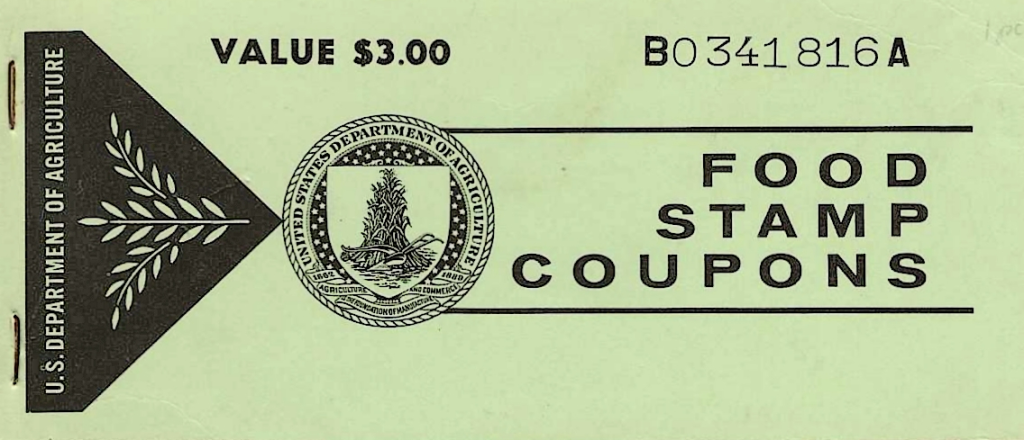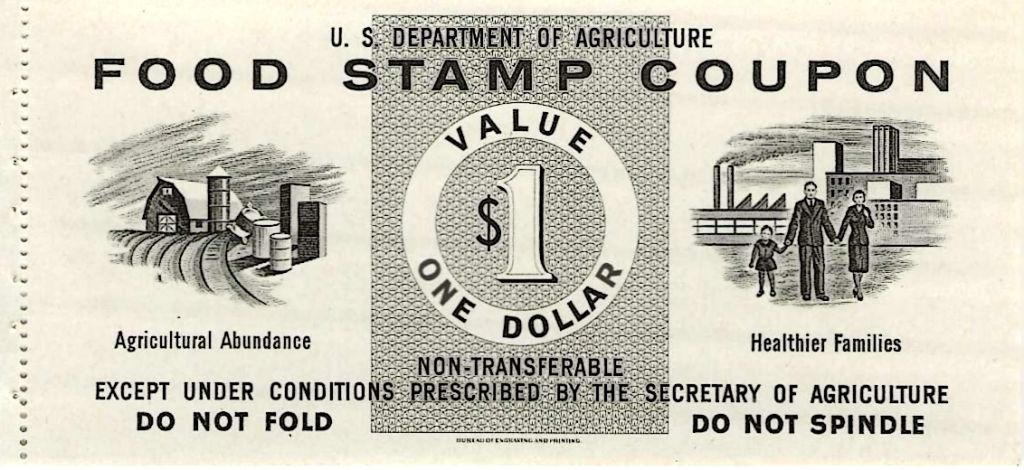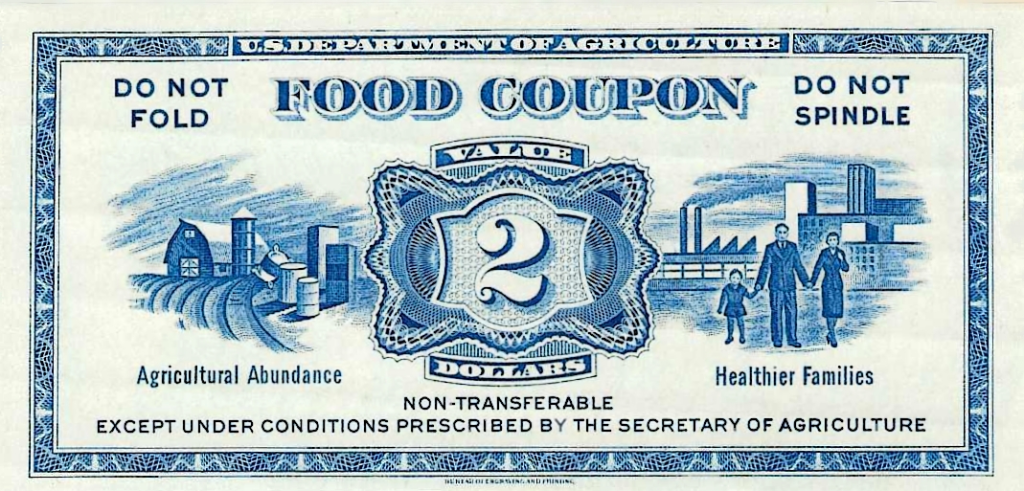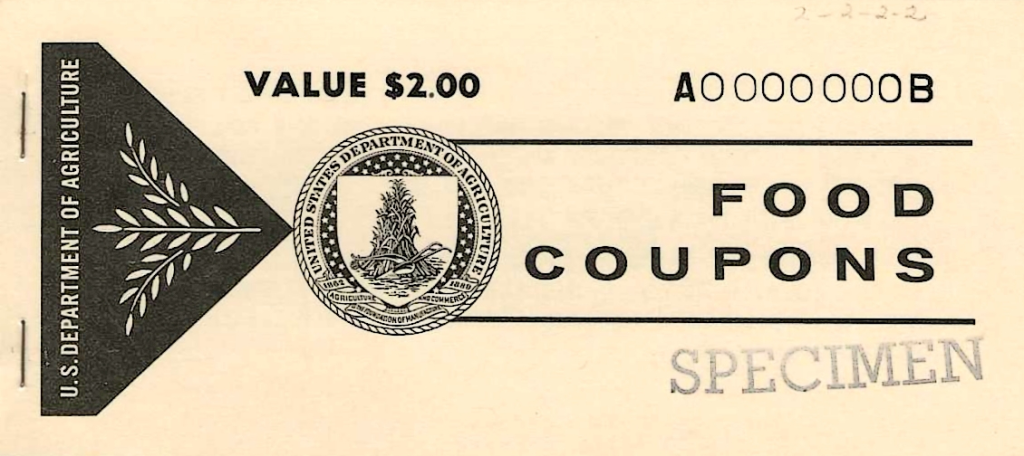
In Executive Order No. 1 dated January 21, 1961, President Kennedy directed the Secretary of Agriculture to increase the amount and variety of foods distributed to low-income families. In February 1961, a pilot program modeled after the 1930s era Surplus Commodities Program (Food Stamp) was formulated.

The 1930s Program allowed participants to purchase orange food stamps at face value. In turn, they also received half that amount in blue food stamps. Orange stamps could be used to purchase any type of food. Blue stamps could only be used to purchase selected surplus foods.

The 1961 pilot program had a similar goal of providing relief but was not connected to surplus commodities. Instead of small stamps, coupons in denominations of $.25 and $1.00 were used. Eligible participants could purchase an amount of coupons equal to their expected monthly food expenditure making them able to receive an additional bonus coupons. The amount of bonus coupons was based on income and the number of dependents. Unlike the 1930s food stamps, there was only one type of food coupon used in the pilot program.

The pilot program ran for one year in eight areas around the United States: Franklin County IL, Floyd County KY, Virginia-Hibbing-Nashwuk MN, Silver Bow County MT, San Miguel County NM, Fayette County PA, McDowell County WV and Detroit MI. Approximately 151,000 households were served in the initial pilot program.
The pilot program proved to be a success and it was gradually expanded. The pilot program was active in 43 areas in 22 states by mid-1964. In August 1964, $5,800,000.00 coupons were distributed representing $3,600,000.00 of purchased coupons and $2,200,000.00 of bonus coupons. The pilot program became permanent with the passage of the Food Stamp Act on August 31, 1964.

Throughout the 1960s, state participation in the Food Stamp Plan was voluntary. States had to apply for areas to be included in the program. It was expanded to a mandatory system nationwide on July 1, 1974.
The initial coupons used for the 1961 pilot program were called Food Stamp Coupons, combining the name of the 1930s program with the larger, coupon-style instrument. As noted above, they came in denominations of $.25 and $1.00 in books having values of $2.00, $3.00 and $10.00. The $2,00 booklet contained 4 x $.25 and 1 x $1.00 coupons, the $3.00 had 4 x $.25 and 2 x $1.00 coupons, and the $10.00 had 10 x $1.00 coupons.
The coupons were not numbered but the coupon book covers were. The US Bureau of Engraving and Printing produced all of this issue consisting of 939,000 $2.00 booklets, 1,048,000 $2.00 booklets and 3,350,000 $10.00 booklets.

In 1962, the name of the instrument was shortened to Food Coupon and the design and denomination of the coupons were altered. Coupons were available in denominations of $.50 and $2.00. A $20.00 booklet was added. The breakdown of coupons in each value booklet was: $2.00 4 x $.50, $3.00 6 x $.50, $10.00 5 x $2.00 and $20.00 10 x $2.00.

Like the earlier type, the coupons were not numbered but the booklet covers were. The following table shows the number of booklets printed for the coupons introduced in 1962.
| $2.00 | A0 000 001B | A1 448 000D* |
| $3.00 | B0 000 001B | B5 124 000E* |
| $10.00 | C0 000 001B | C4 326 000C* |
| $20.00 | D0 000 001B | D8 190 000E* |
